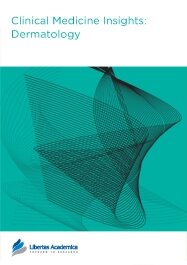

Publication Date: 08 Mar 2010
Type: Case Report
Journal: Clinical Medicine Insights: Dermatology
Citation: Clinical Medicine Insights: Dermatology 2010:3 11-13
doi: 10.4137/CMD.S3633

Objective: Presentation of chondrodermatitis nodularis helicis chronica that is an uncommon but important differential diagnosis for particular benign and malignant tumours.
Case report: A 32-year-old woman presented with a painful, hyperkeratotic nodule on her left antihelix. The lesion was treated with cryotherapy and resolved completely.
Conclusion: Chondrodermatitis nodularis helicis should be considered as an important differential diagnosis for skin tumours and cryotherapy may be a good alternative in selected cases with an excellent cosmetic outcome to the surgery although surgery is still the mainstay of the treatment of this condition.
PDF (1.44 MB PDF FORMAT)
RIS citation (ENDNOTE, REFERENCE MANAGER, PROCITE, REFWORKS)
BibTex citation (BIBDESK, LATEX)

I highly recommend publication in Libertas Academia journals. The entire submission, review and publication process for our article in Clinical Medicine Insights: Dermatology was easy and quick. The reviews were very professional and helpful and the publication fees were reasonable. We also appreciate that our article is available online free of charge to anyone interested in it.

All authors are surveyed after their articles are published. Authors are asked to rate their experience in a variety of areas, and their responses help us to monitor our performance. Presented here are their responses in some key areas. No 'poor' or 'very poor' responses were received; these are represented in the 'other' category.See Our Results
Copyright © 2013 Libertas Academica Ltd (except open access articles and accompanying metadata and supplementary files.)
Facebook Google+ Twitter
Pinterest Tumblr YouTube